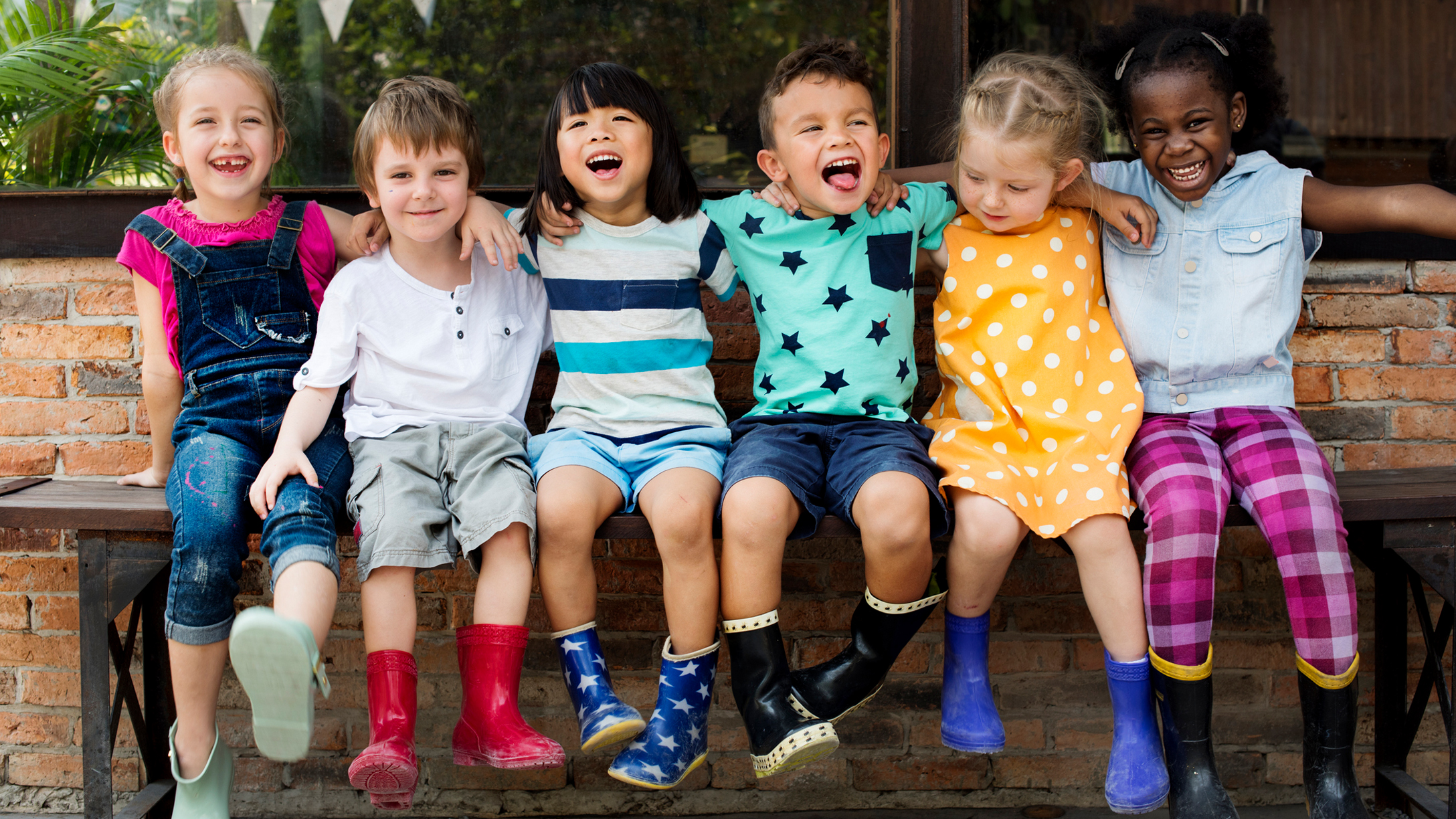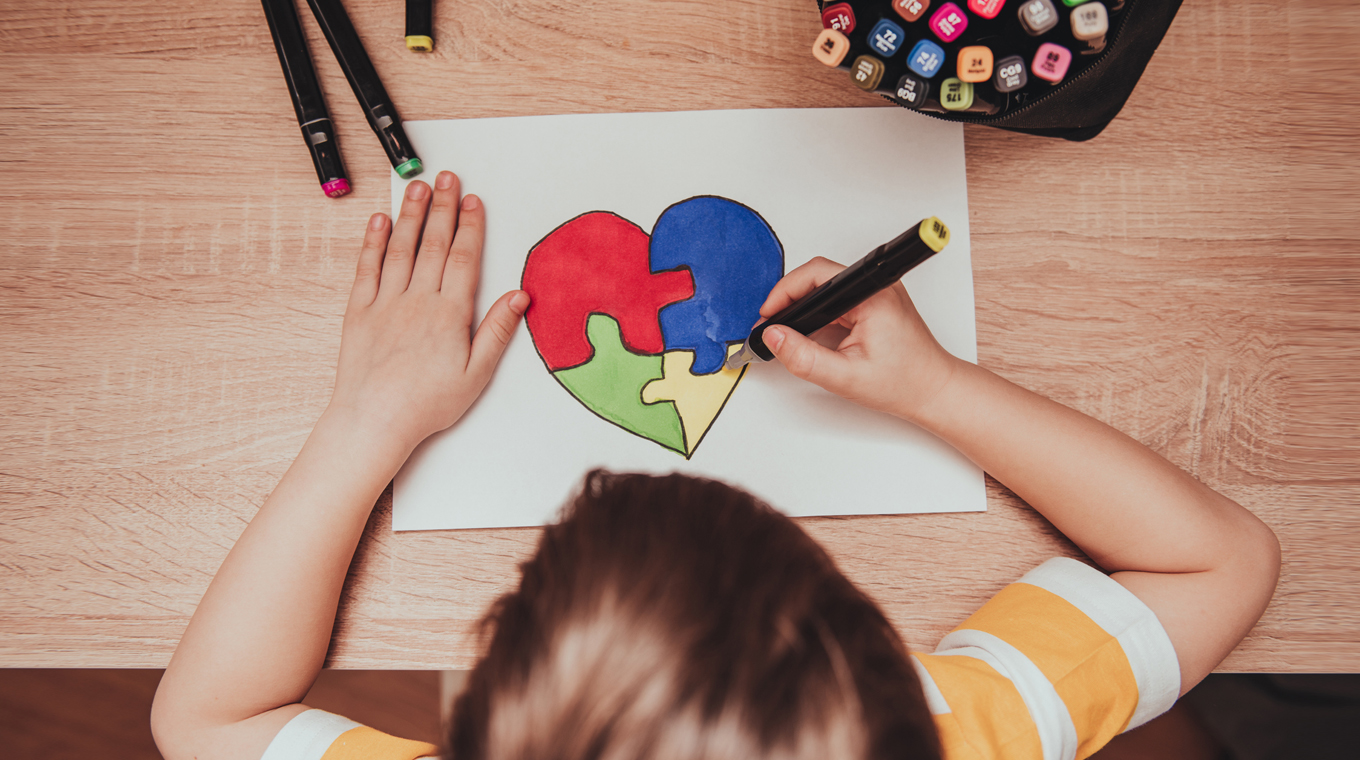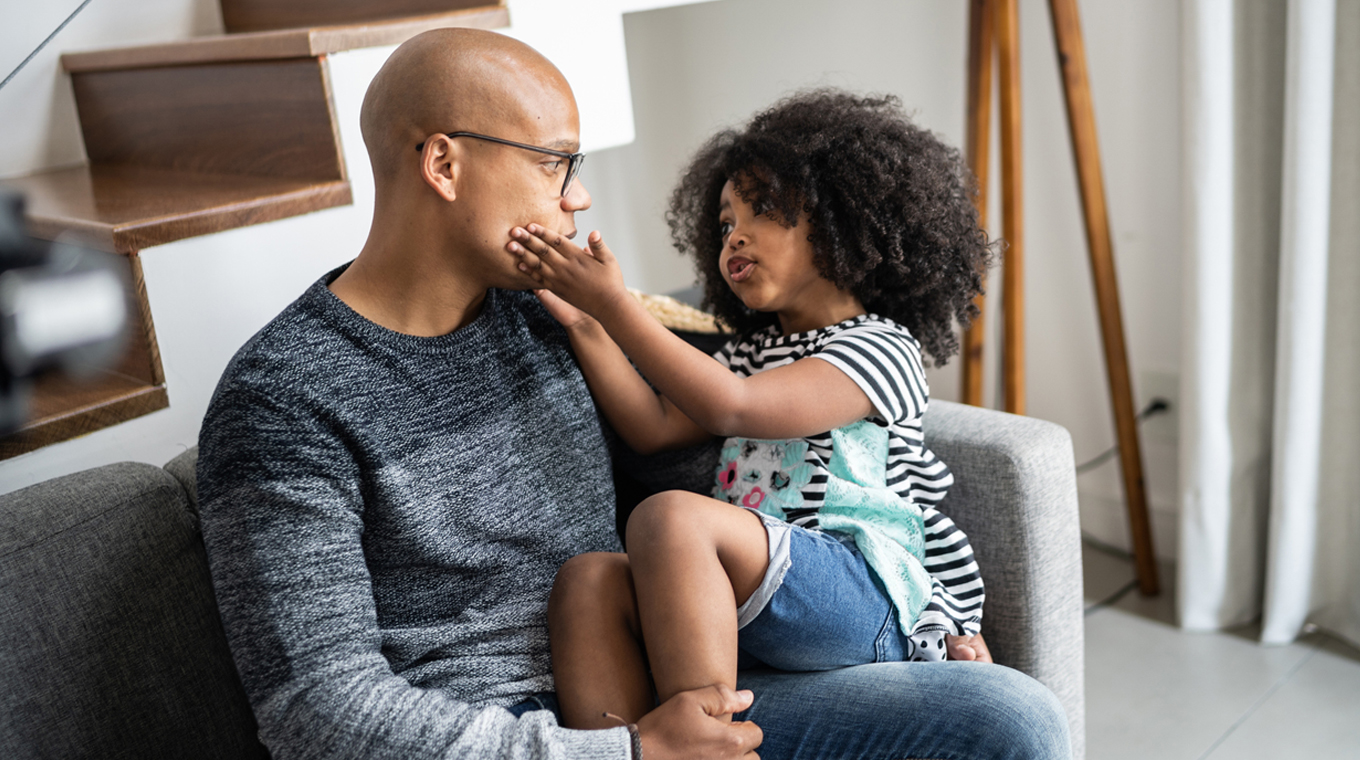
IN THIS ARTICLE
April is Autism Awareness Month, and with 1 in 36 kids being on the autism spectrum, it’s vital that all understand what autism spectrum disorder is and how it affects children.
With ASD becoming more prevalent in today’s society, children of all ages who are neurotypical — those who do not have a neurodevelopment challenge — must gain a keen understanding of what the world is like for those who have autism. Any child who feels different fears not being accepted by their peers, and on that note, parents feel that same fear for their children.
So, let’s shut down the fear and create a more inclusive society. Here are ways that parents can effectively explain autism to a child that will foster more acceptance of differences within our communities.
Autism Awareness Month 2023

During April and throughout the year, it’s vital for all to know about the diversity of autism. Each child with autism is different.
“Just because they don’t learn the way ‘typical’ children do doesn’t mean there is something wrong with them. It means that we as parents, caregivers, friends, neighbors and teachers need to find different ways to try and make a connection,” parent Laura Jones told Today.
Autism Awareness Month is in place to ensure that all stakeholders — meaning all individuals within society — become more educated on what they can do for those with autism. The more we understand the varying needs of autistic children, the more we can help them thrive.
Autism awareness: How to start the conversation

Autism awareness begins at home. The conversation does not have to be complicated, but it does have to happen. Here are practical ways of engaging your child in a talk about ASD:
Openly talk about autism with children
If not discussing ASD is an unspoken rule at home, then it might be time to change that. Making it acceptable to discuss autism or any other differences that an individual might have can lead to a more accepting child.
Discuss using appropriate language
If kids learn how to address a child who has ASD, that makes the first challenge of socializing disappear. Inform your children on how speak respectfully and warmly.
“If we don’t recognize, educate ourselves on, and ask a person’s preferred terminology, we gloss over their identity and sense of self,” Melissa Danielsen, neurodivergent and disability care advocate, told Insider.
Talk about diversity of strengths
Kids know that people are different, but sometimes differences can be interpreted in negative ways. To show kids how differences can be strengths — or even one’s superpower — discuss the ways in which a child with ASD sees the world and interprets it.
“Autism is different from one person to another, and different perspectives and lived experiences with autism should be at the forefront of the conversation,” advised Danielson. Here are some tips on how to hold those conversations:
- Share how some children with autism are extremely passionate about their hobbies and interests.
- Explain how those with ASD might prefer quiet spaces rather than loud locations.
- Discuss how autistic children might need to repeat words or hum to themselves so they can process what is happening around them.
No matter the difference that a child with autism might have, parents must make sure that those differences are not seen in a negative light.
Research!
Instead of sticking with one’s own knowledge of autism, it is always best to do research. There are so many new findings happening with autism that it is never a bad idea to ask your doctor for information and to look up helpful websites, such as Autism Speaks or Autism Society.
Stories about autism: Books that foster understanding

Talking about autism is no simple task, and let’s face it — sometimes a book will make a complicated topic easier to understand. To help kids — tots to teens — understand what a kid with ASD might be experiencing, there are informative and engaging books that share those lesser-known stories.
The Girl Who Thought in Pictures: The Story of Dr. Temple Grandin
This informative picture book tells the true story of Dr. Grandin, a scientist who was autistic. The book beautifully unfolds how Dr. Grandin processed information and how she became great a scientist.
My Brother Charlie
Actress Holly Robinson Peete and her daughter Ryan Elizabeth Peete share the story of a twin sister and her autistic brother, Charlie. As they go about their daily activities, the sister explains the differences between her and her brother. While fiction, the picture book thoughtfully reflects on the personal experiences of Holly’s son and Ryan’s twin brother.
The Reason I Jump
This middle grade novel is told through a series of 15 questions in which a young boy with ASD answers. His responses expose the true ways that an autistic child navigates autism.
A Kind of Spark
When a young autistic tween girl learns that her village used to execute witches hundreds of years ago, she decides to create a memorial for those women. This harrowing tale will help tweens and teens see those with ASD for who they are, rather than what differences they might have.




